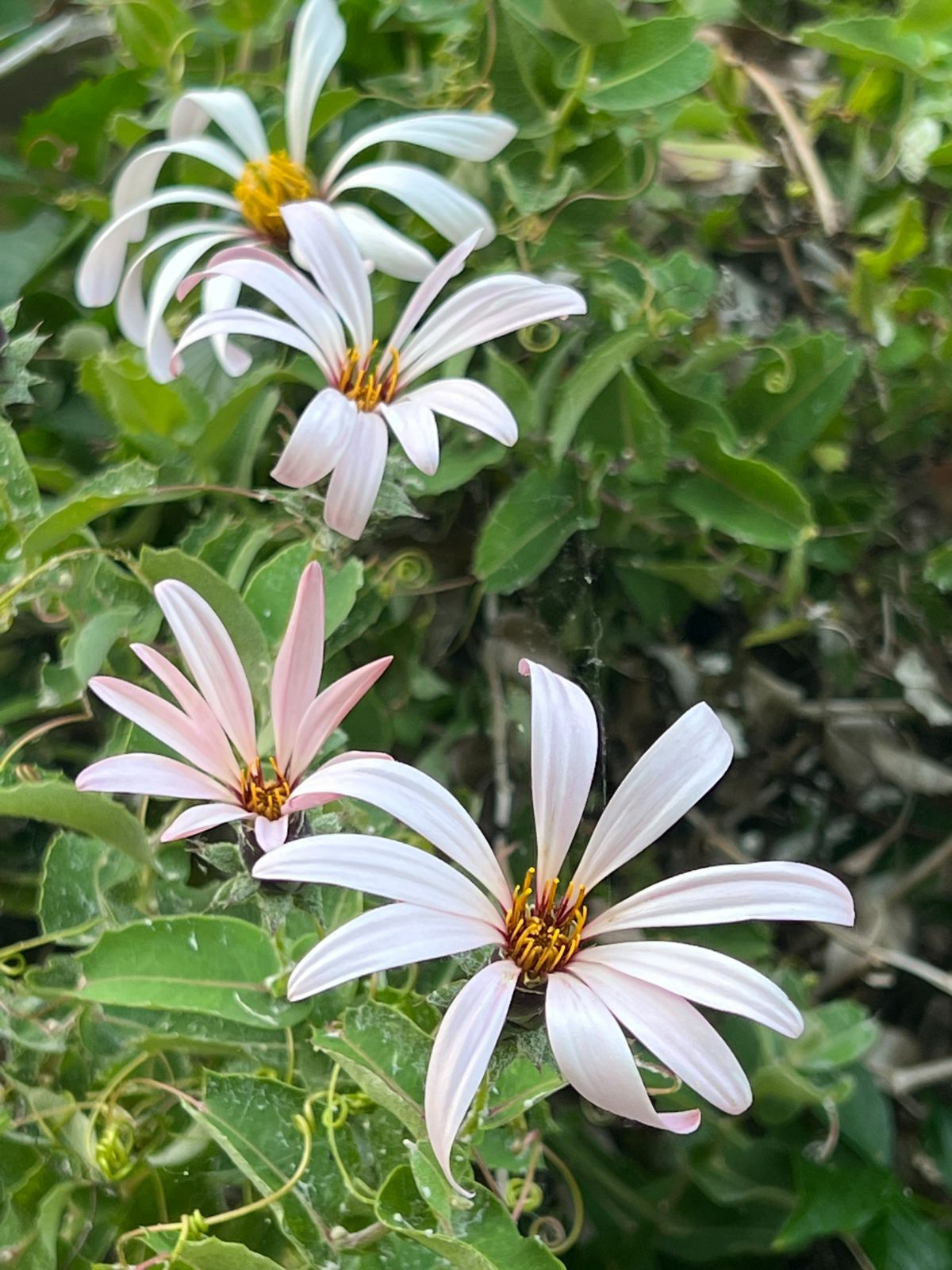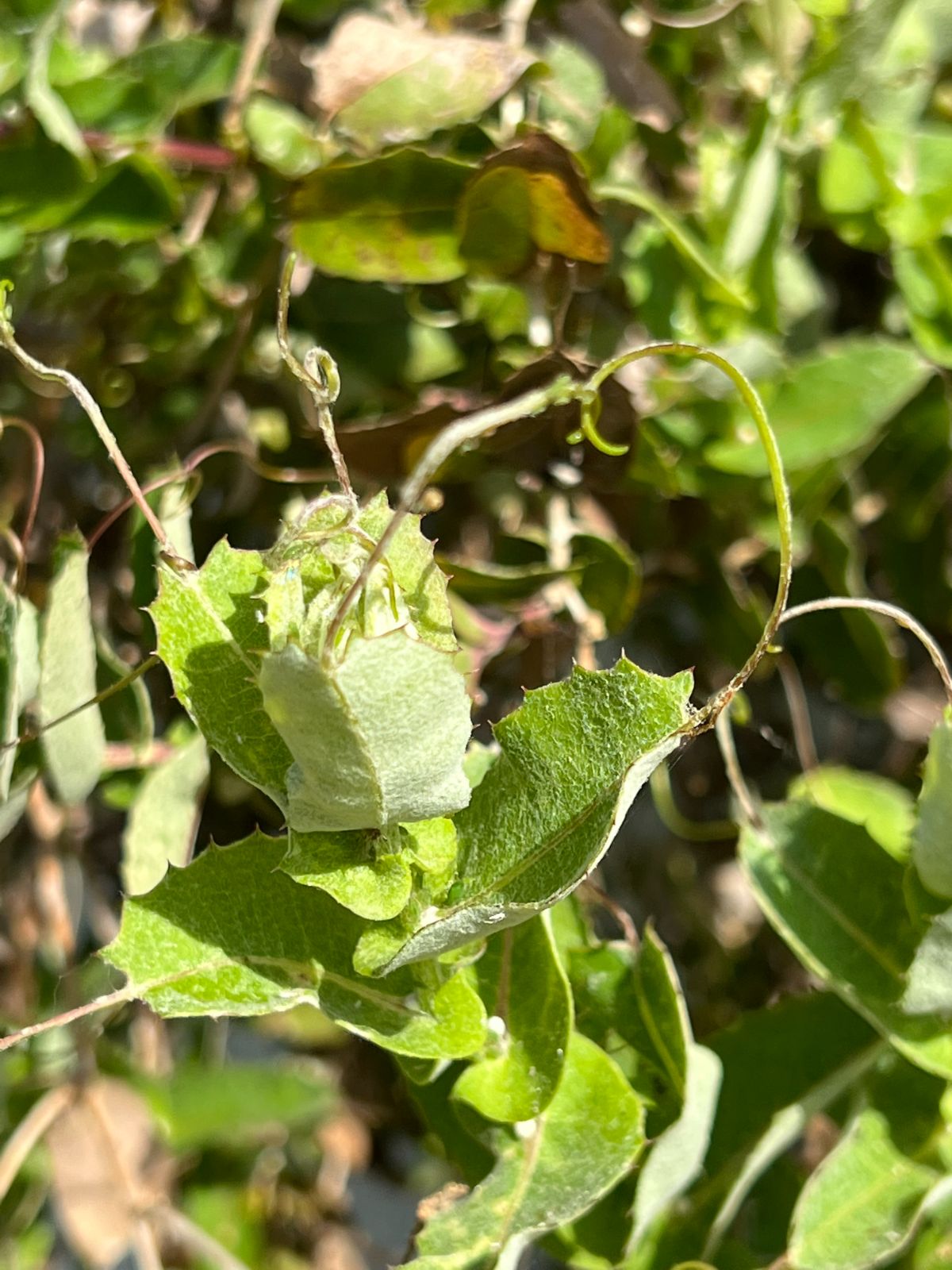Mutisia ilicifolia
Credits
Article from Bean's Trees and Shrubs Hardy in the British Isles
Recommended citation
'Mutisia ilicifolia' from the website Trees and Shrubs Online (treesandshrubsonline.
Genus
Synonyms
- (incl. M. ilicifolia var. decandolleana (Phil.) Cabrera)
A slender-stemmed evergreen climbing plant whose young shoots, as seen on cultivated plants, are furnished with toothed ridges (wings); they are clothed with a whitish or pale brown wool, as are also the leaves beneath and the flower-stalks. Many wild specimens in the Kew Herbarium show that those parts of the plant are often glabrous and the stems merely ribbed. Leaves holly-like, leathery, simple, stalkless, ovate-oblong, deeply heart-shaped at the base, 1 to 21⁄4 in. long, the margins strongly spiny-toothed, the midrib prolonged 1 to 4 in. so as to form a slender curling tendril, upper-surface dark bright green. Flower-heads solitary, terminal, borne on a stalk usually less than 1⁄2 in. long. Ray-florets eight to twelve, of various shades of pink or pale mauve, oblong-lanceolate, pointed, giving the flower-head a diameter of 2 to 3 in. Disk-florets yellow, numerous, forming a circular mass in the centre 1 in. wide. Bracts of the involucre erect, roundish ovate to lanceolate, often constricted at the apex to a short point, but variously shaped. It flowers at almost all seasons. Bot. Mag., t. 6009.
Native of Chile; introduced in 1832. Generally it is regarded as a cool greenhouse plant, but it is grown as a wall plant in Cornwall and even in the rock garden at Edinburgh Botanic Garden survived twenty winters. The late Clarence Elliott collected it in Chile at 5,000 to 6,000 ft altitude, flowering in November 1927. He notes that it was climbing over and smothering bushes up to 10 and 15 ft high. Easily recognised by its sessile, simple, holly-like leaves and shortly stalked flower-heads, but sometimes found to be difficult to keep in good health.


